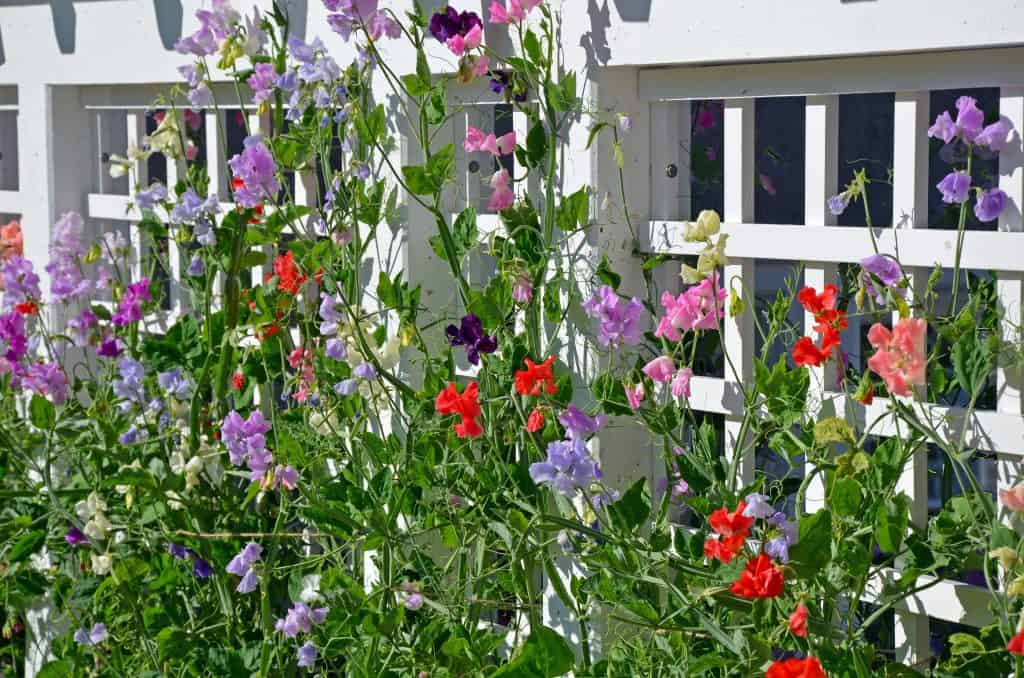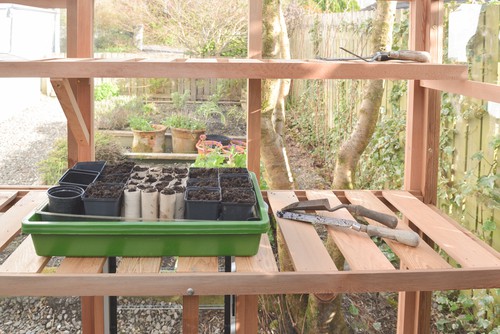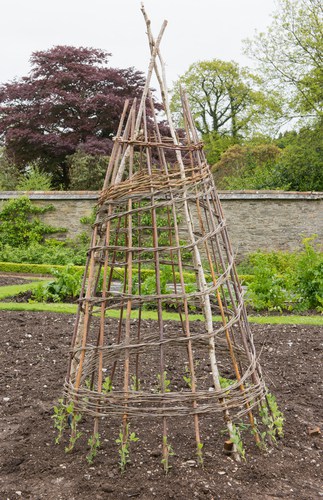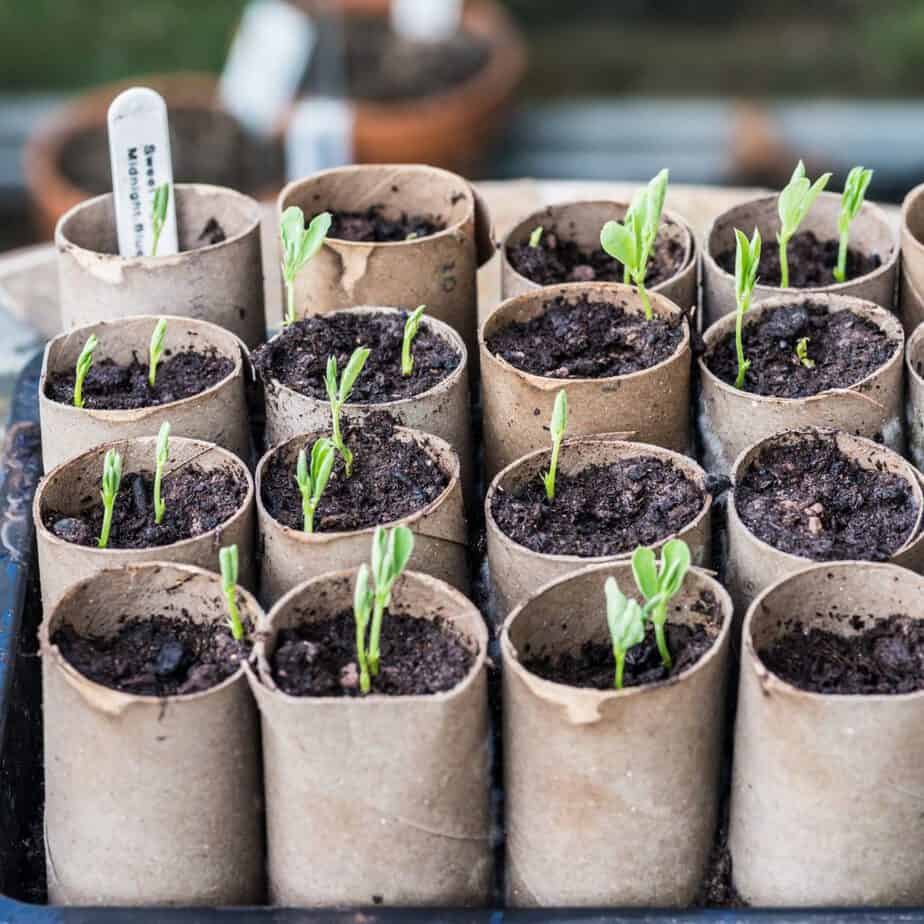Last updated on February 27th, 2022
Our site is reader supported, this means we may earn a small commission from Amazon and other affiliates when you buy through links on our site.
Sweet peas are, as their name suggests, very sweet not only in production but in fragrance, however, it’s the annual varieties that are known for their amazing scent. You can also get perennial sweet peas that come back year after year, but many of these aren’t that fragrant.
Thankfully growing them is quite simple. They are easy to grow from seed, planting in autumn and overwintering them in a cold greenhouse or cold frame. You also have the option to sow them in the spring so that you don’t need to worry about overwintering them, however, they may need hardening off first, which usually means putting them out during the day and bringing them in at night for a week or two. Failing that most garden centres and nurseries sell them in 9cm pots but growing them from seed does give you the best choice of varieties.

Sweet peas can be planted in the ground, in pots and even in hanging baskets where they can trail over.
How long do sweet peas take to germinate?
That depends on where you live, but on average between 7 and 15 days, so you don’t need to wait that long. They will germinate even faster when placed in a heated propagator.
When do you plant sweet peas?
Sowing Outdoors
If you live in a warmer area with milder winters and want to try sowing them outdoors into the ground, you can sow the sweet peas in the autumn. For any other area, and for most of the UK, it is best to do it in spring around March to April.
Sowing Indoors

If you want to sow them indoors (which is often more successful) this can be done in October or November and it may also lead to earlier blooms. Young plants can then be overwintered in a cold frame or greenhouse.
The easiest time to sow them is between January and April because you don’t need to overwinter them, however, you will need to harden them off first before planting them out permanently if there is still a risk of frost.
Regardless of when you sow, it is recommended that you soak the seeds in water for an average of 9 hours beforehand so that the seed coat is softened and the sprouting process is expedited. Some gardeners recommend a few methods to help with germination but we have never had any issues with just planting the seeds straight away and have always had a good success rate.
Are sweet peas annuals or perennials?
Most sweet peas are considered to be annuals. You can find some perennials out there, such as Lathyrus latifolius, however, they won’t have the sweet pea fragrance that is associated with the annual varieties. But they do grow year after year and still give a good show growing to over 6ft tall.
Perennial sweet peas can be planted as you would any other perennial and cut back to ground level for the winter.
Planting sweet peas
What you will need:
- Sweet pea seeds.
- Potting soil (if you are growing in pots or germinating indoors).
- Fertiliser.
- Compost.
- Fencing or support structures.
Prepare the soil for the best show
When you are ready to plant your sweet peas in the garden, be aware of the fact that they are very greedy so you should apply a layer of bone meal, compost or manure and natural fertiliser to the soil beforehand. We recommend doing this up to 2 weeks before planting if possible. Mix all of this in deeply to achieve optimum results.
The vines will grow rapidly and they need something to climb against. For this reason, you need to place support posts or sturdy frames where you have your sweet peas and they will scramble up them, to heights as tall as 6ft.

When you sow seedlings, do so after the last frost, in rows. You want one row on either side of the trellis or structure you are using. Plant each seedling around 20cm apart. The vines will begin to explode with new lush growth, at which point, you should tie them to the trellis so that the vines can be supported. You might see over 30cm of growth per week once they really get going. It’s also a good idea to pinch the top out once they reach around 1ft tall because this encourages them to bush out more to create an even better show.
Sowing Indoors before planting out

If you sow them indoors this can be done between January and March, fill a 9cm pot with quality compost and place around 6-7 seeds (evenly spread) with an inch of compost on top. Water well and cover with a piece of clear plastic, for example, a sheet of polythene.
Once they shoot, remove the plastic, and once they are established enough you can plant them outside, ensuring first that the risk of frost has passed or alternatively you can harden them off by placing them outside during the day and bringing them in again at night to protect them from frost. After a couple of weeks, they should be fine to be permanently planted outdoors.
Sweet pea care
Sweet peas are at risk from slugs and snails when they are developing younger growth, so keep a lookout. These plants are also susceptible to things like powdery mildew, leaf spot, and pythium root rot.
Do sweet peas need full sun?
Yes, sweet peas prefer full sun and will do best with full sun exposure. As far as water is concerned, they love it. They need consistently moist soil, especially during warmer weather but it must be well-drained.
After they are successfully planted, you should feed them with a mixture of seaweed emulsion and diluted fish emulsion. Once they are flowering be sure to deadhead them regularly to encourage more flowers and remove seed pods straight away.


